Akira Kurosawa | 2hr 31min

When dessert finally arrives at the wedding reception of Yoshiko and Koichi Nishi, it would surely seem as if someone is pulling a cruel prank on the father of the bride, Iwabuchi. The day has already been tainted by the arrest of the senior businessman’s assistant Wada in full view of the guests and reporters, and now as the cake is wheeled out to reveal an elaborate design modelled after the Public Development Corporation headquarters, a single rose sitting in a top-floor window draws hushed whispers. It is no secret that this is where Assistant Chief Furuya jumped from some years earlier, bringing a standstill to the investigation that implicated Iwabuchi and several other executives. Meanwhile, suspicions that his colleagues pressured him into taking his own life are only ever uttered behind closed doors, with absolute confidence that no one is eavesdropping.
Only by methodically peeling back the layers of conspiracies guarding the upper-class plutocrats can the truth be revealed, though this is not a job for the police, courts, or even the media. True to his fondness for Shakespeare, Akira Kurosawa places this colossal objective on the shoulders of a single man seeking retribution for his deceased father, and thus reveals The Bad Sleep Well to be a contemporary, noir-tinted adaptation of Hamlet starring Toshiro Mifune as the vengeful son. Posing as Iwabuchi’s secretary, Koichi Nishi stands alone against the corrupt corporate culture of mid-century Japan, working from the shadows as he blackmails, intimidates, and investigates his way to the top.
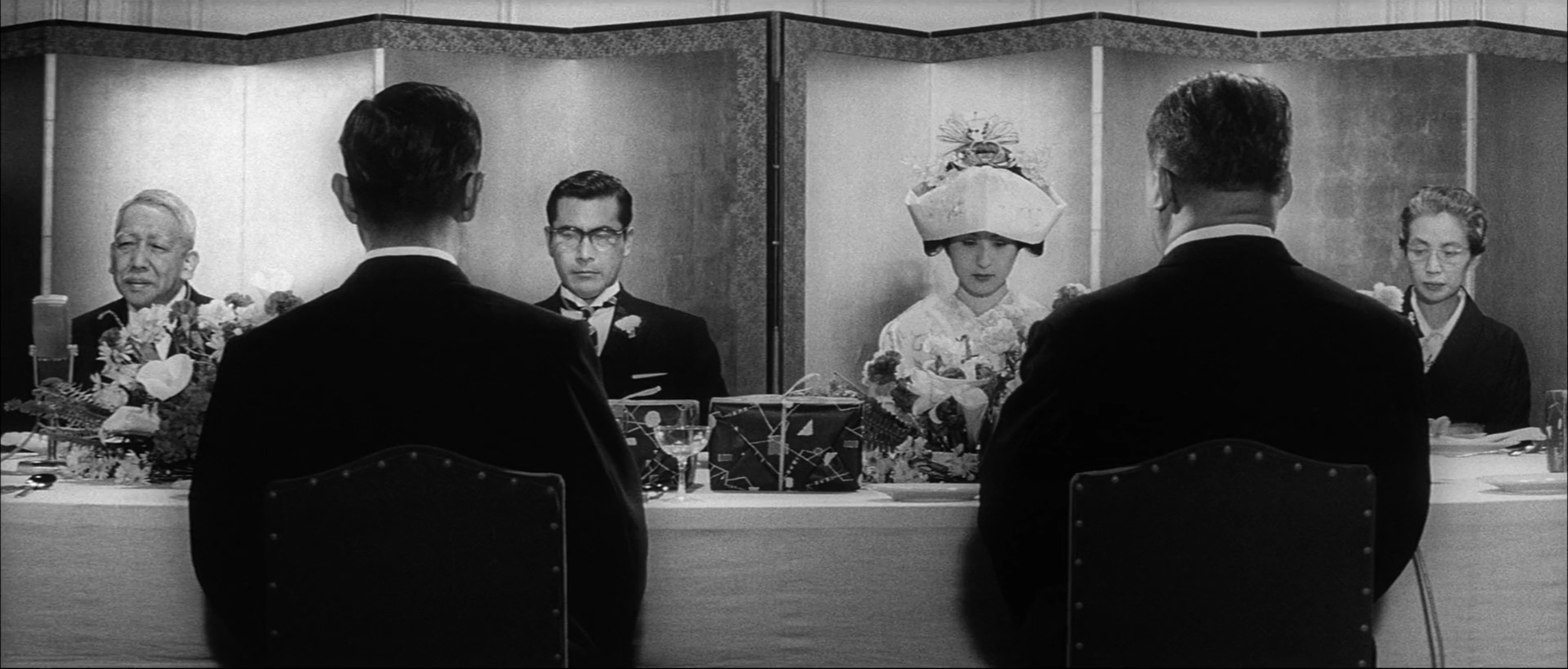
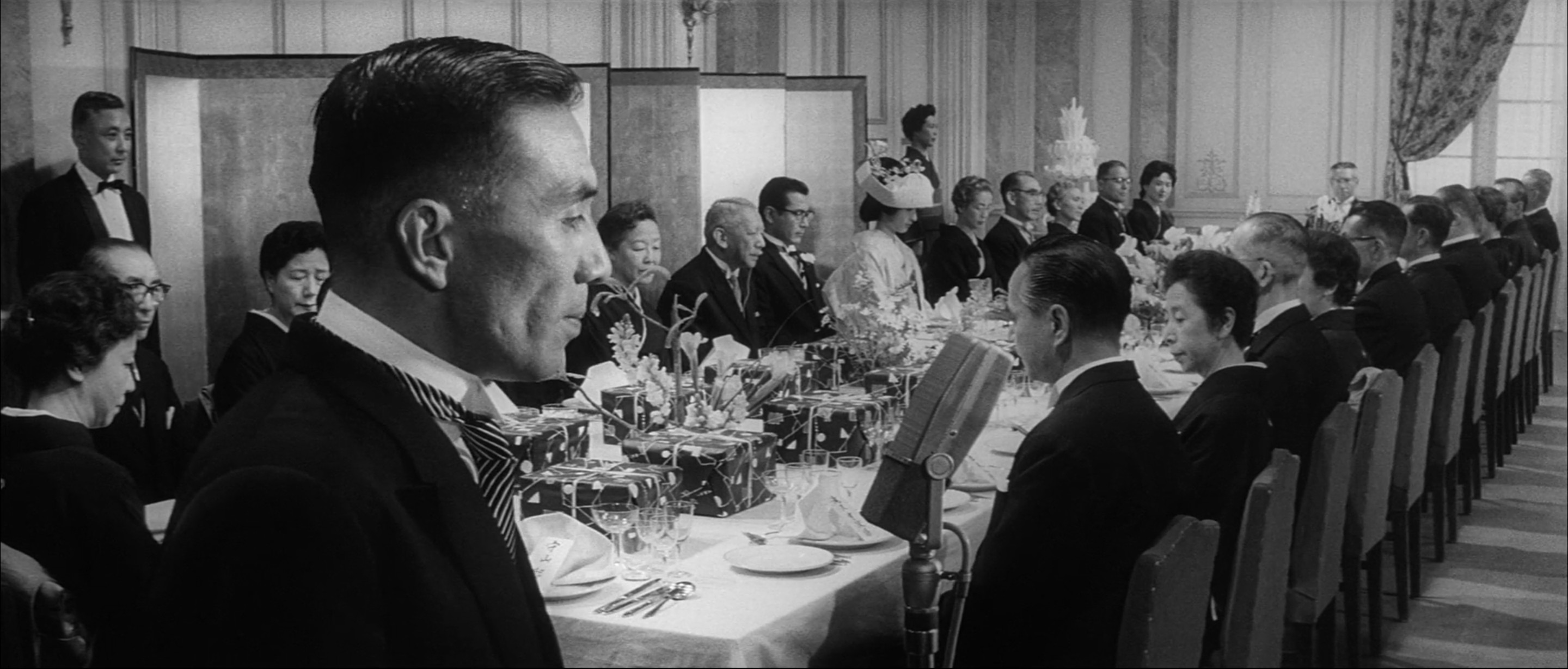
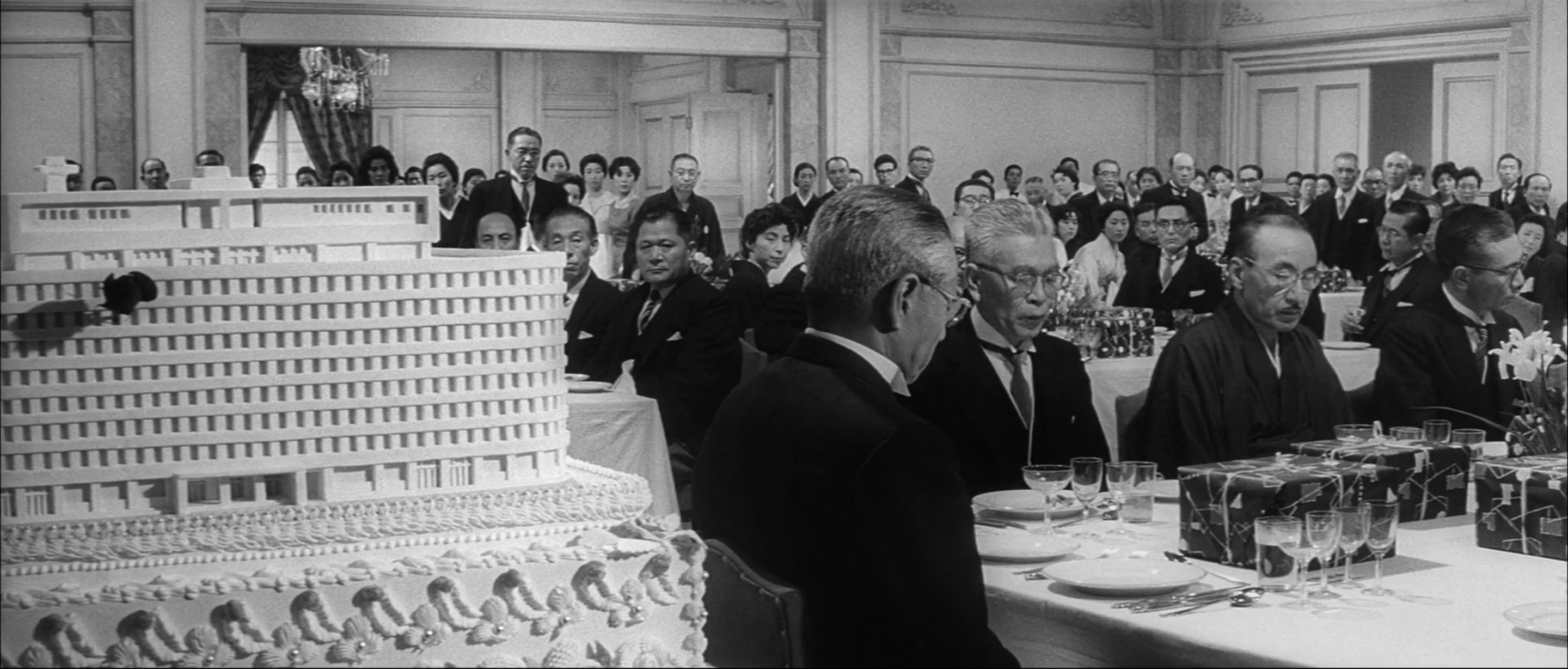
Even by Kurosawa’s standards, The Bad Sleep Well’s plot is remarkably dense, sprawling across a vast ensemble of characters who bring personal stakes to each gear in the narrative vehicle. The wedding itself is a tremendous setup, introducing the relevant parties through a Greek chorus of journalists offering backstory and commentary, while remarkably steering clear of convoluted exposition. In his meticulous arrangement of these nameless reporters among the masses of wedding guests, Kurosawa’s extraordinary eye for blocking bodies across the full horizontal length of his widescreen canvas is immediately revealed, developing a sharp aesthetic that carries through virtually every frame of the film with astounding consistency.
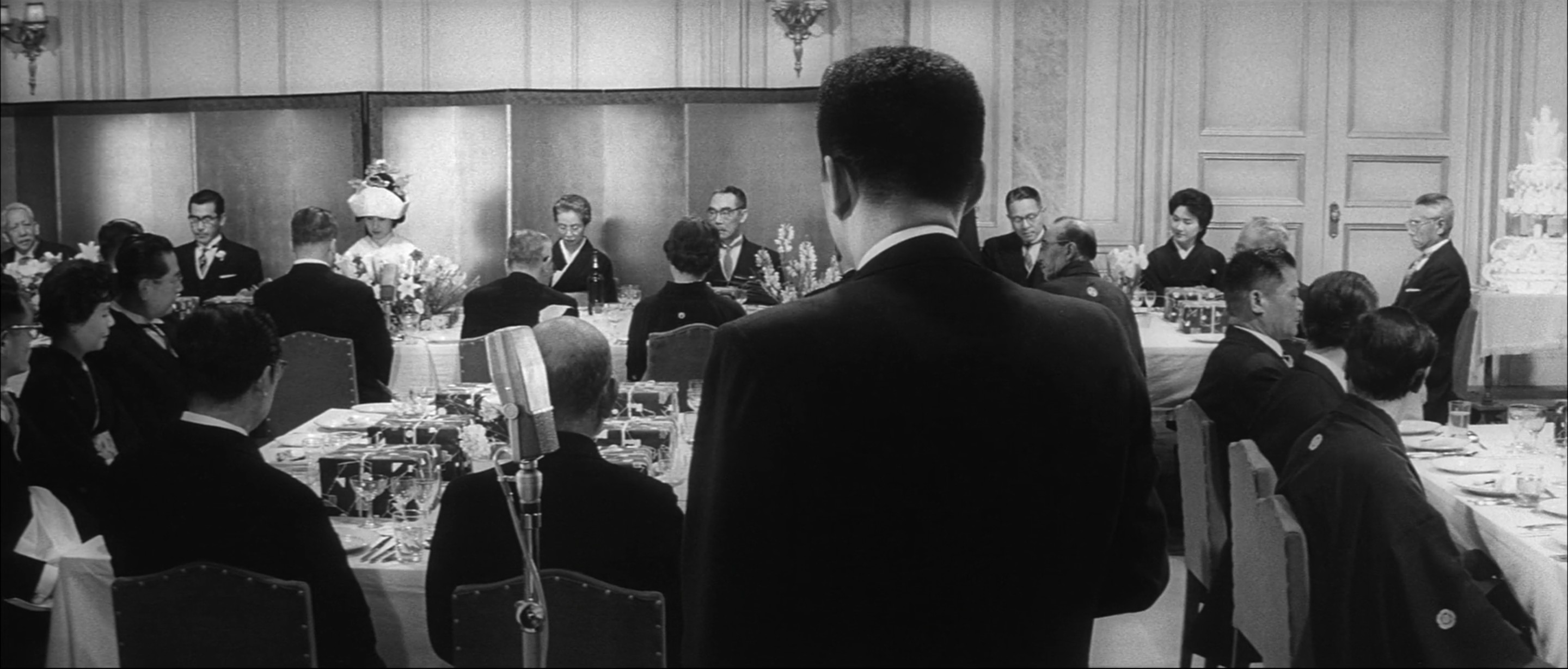
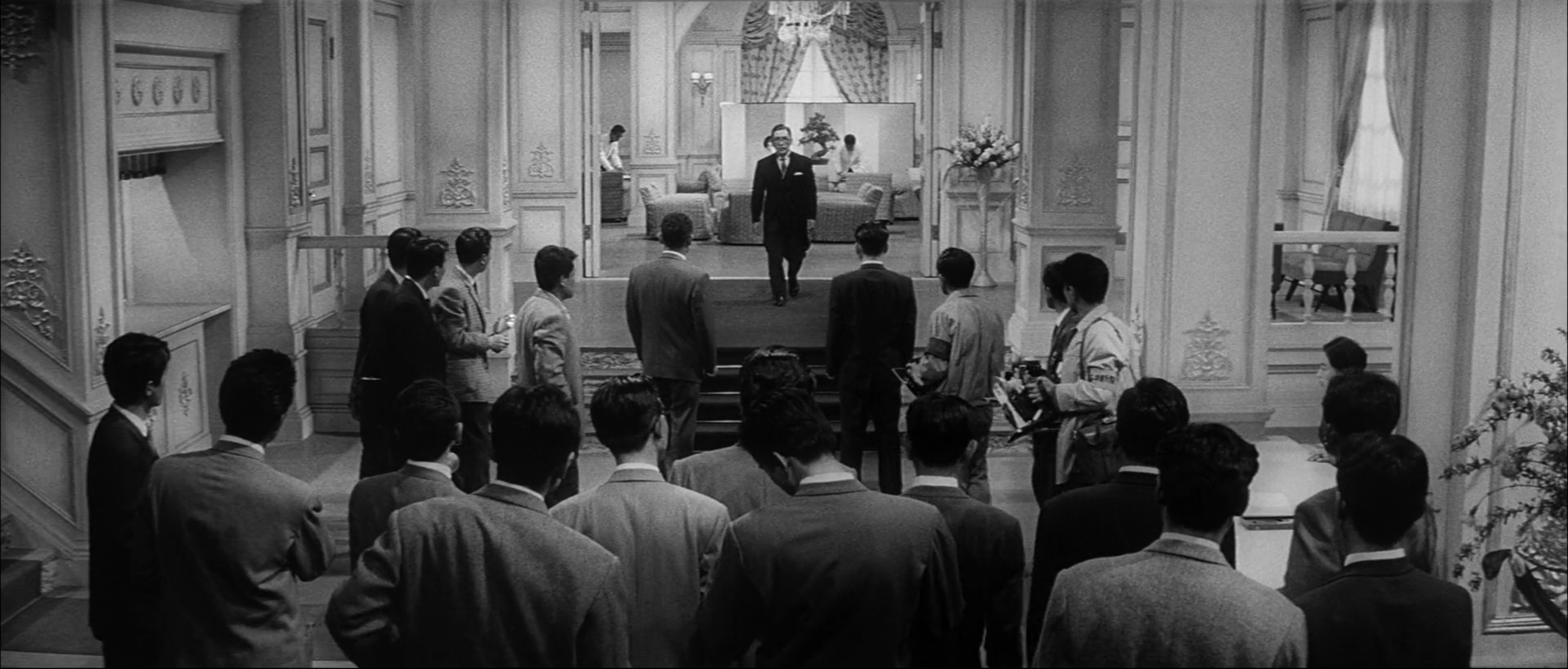
The shapes and lines that form in Kurosawa’s crowded staging here effectively draw our eyes to the subjects of his focus, highlighting even the smallest details within his ensemble such as Nishi’s quiet surveillance of his guests, and the suspicious reactions of executives when the cake makes its damning appearance. “Best one act I’ve ever seen,” a reporter wryly acclaims at this grand twist, and if this were a short film he wouldn’t be wrong – yet the witty response from his colleague might as well be Kurosawa impishly promising to follow up with an even more magnificent pay-off.
“One act? This is just the prelude.”
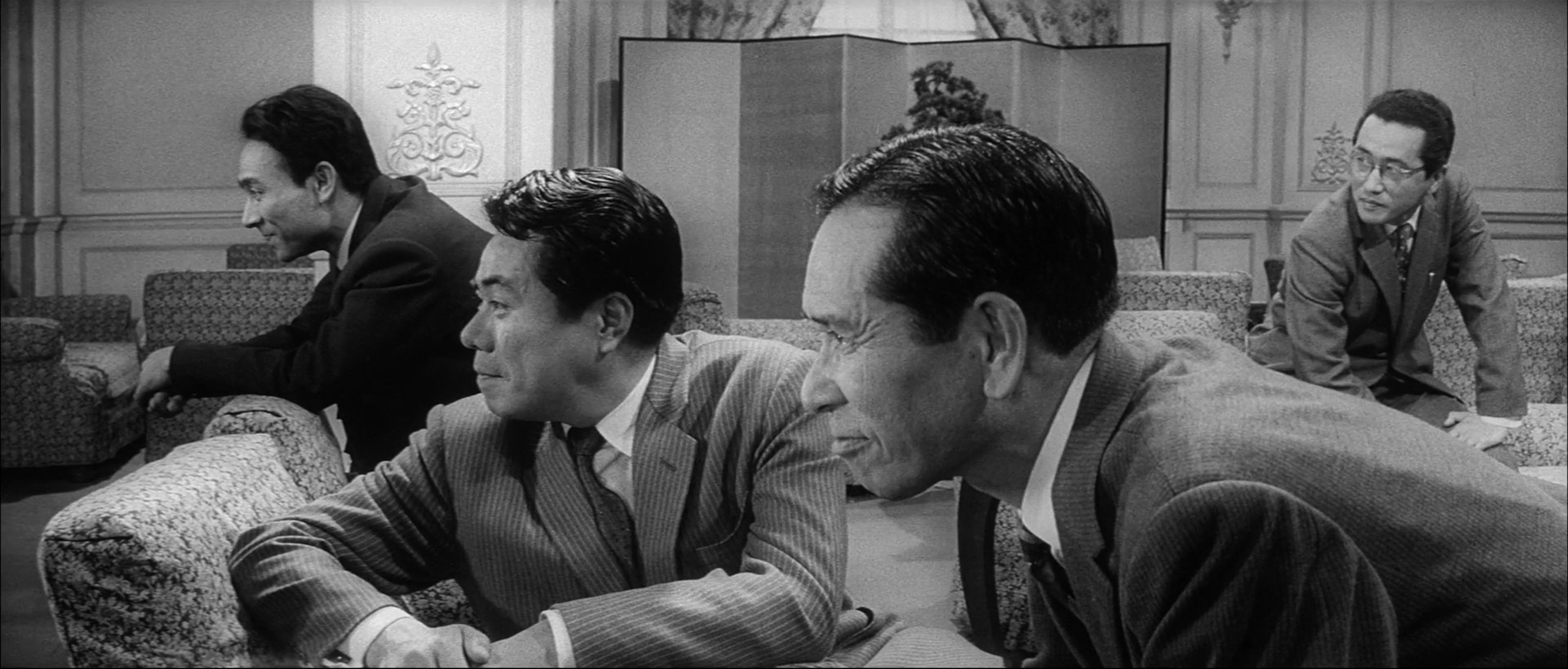
Indeed, The Bad Sleep Well is only just getting started, as from here Kurosawa effortlessly shifts between multiple narrative threads and carefully weaves them into Nishi ‘s single-minded endeavour to take down his father’s killers. After Wada is released from police custody and rescued from a suicide attempt atop a live volcano by Nishi, he quickly becomes one of our protagonist’s greatest resources, faking his own death and psychologically tormenting contract officer Shirai by appearing as a ghost. Unfortunately, Nishi is not so quick to save company accountant Miura from his superiors, who demonstrate their chilling efficiency through a single, written message – “I know you will see this through to the bitter end.” It might as well be a bullet from a sniper’s rifle, one reporter comments, as it isn’t long afterwards that Miura willingly runs in front of a truck.
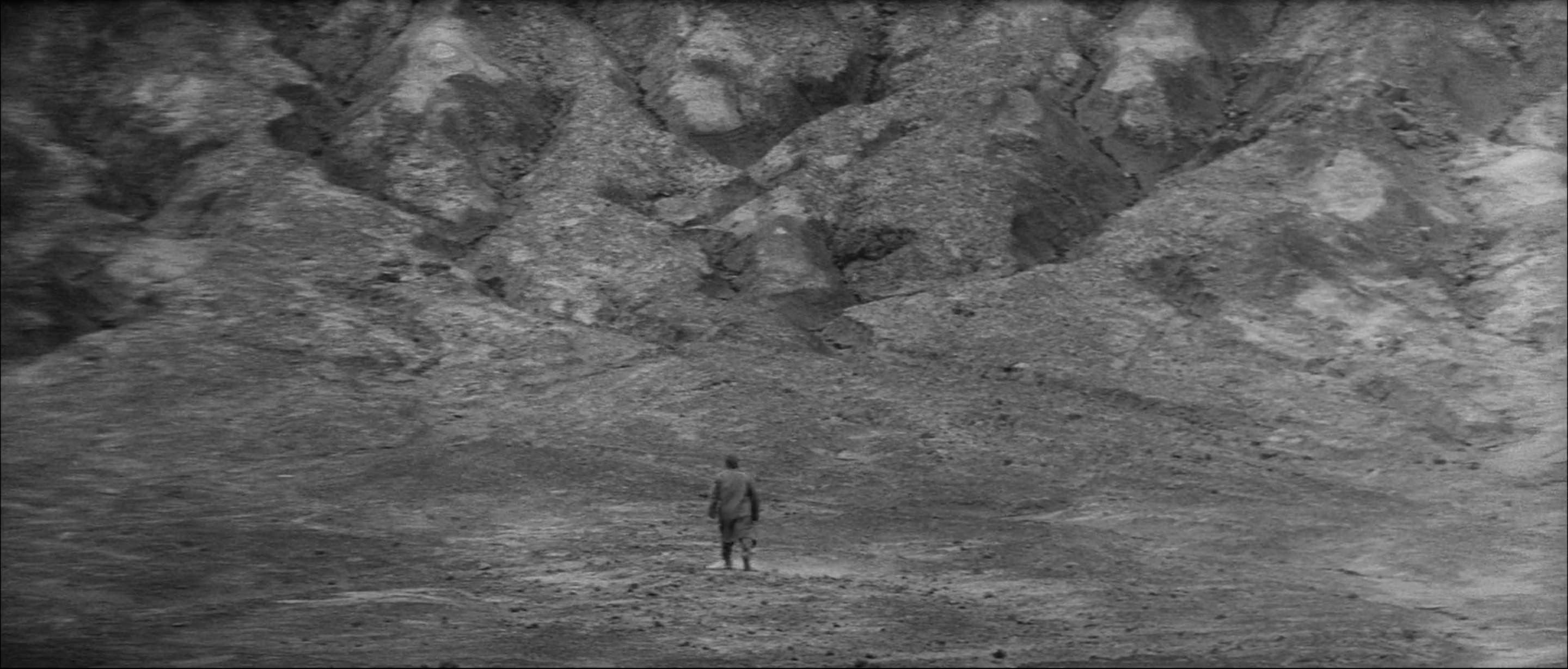
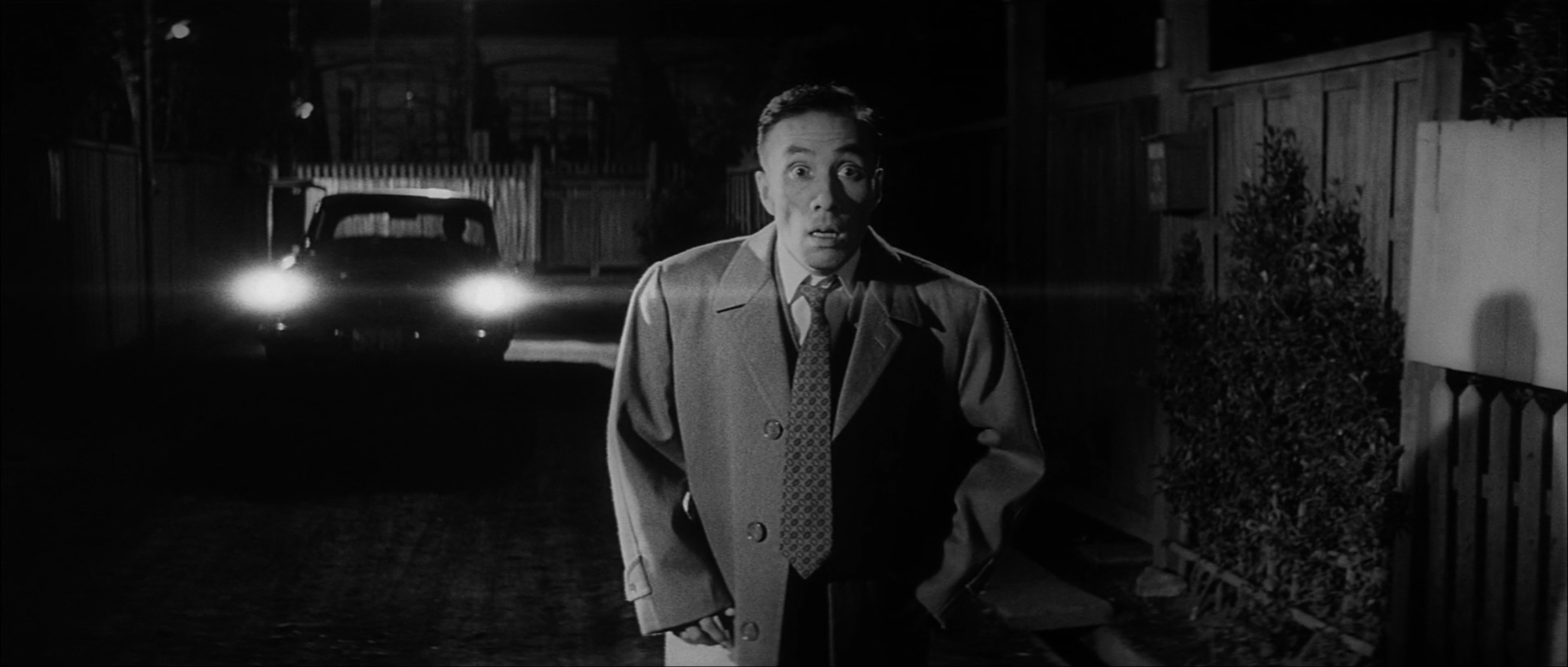
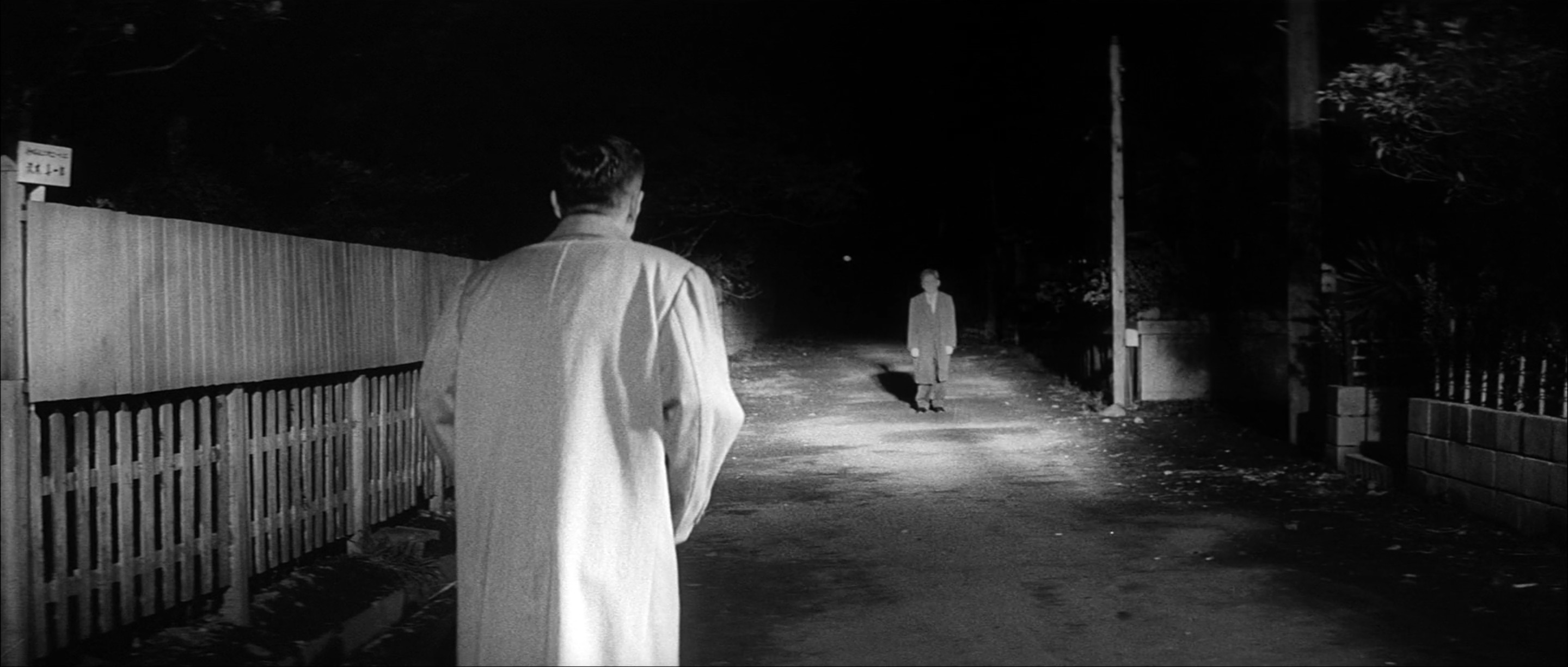
With Venetian blinds imposing severe backdrops inside corporate offices and Masaru Sato’s band of brass and percussion rhythmically carrying through a dark, jazzy ambience, Kurosawa’s admiration of Hollywood film noirs bleeds through his nihilistic take on Hamlet, positioning Nishi himself as a morally questionable antihero. This is a man who didn’t even realise how much his father loved him until after receiving a huge inheritance in his will, and yet has nevertheless taken it on himself to sacrifice innocence bystanders, marry a woman he doesn’t truly love, and implement cruel methods of torture to avenge his murder. “It’s not easy hating evil. You have to stoke your own fury until you become evil yourself,” he ponders in a shot that sinks his profile in darkness, flanking him with Wada and his friend Itakura in the background like two conflicting sides of his conscience. Even when Itakura is furiously chastising Wada in another tightly framed composition, Mifune continues to dominate the shot from the foreground like a hardboiled Humphrey Bogart detective, coolly smoking a cigarette and radiating a bitter stoicism.

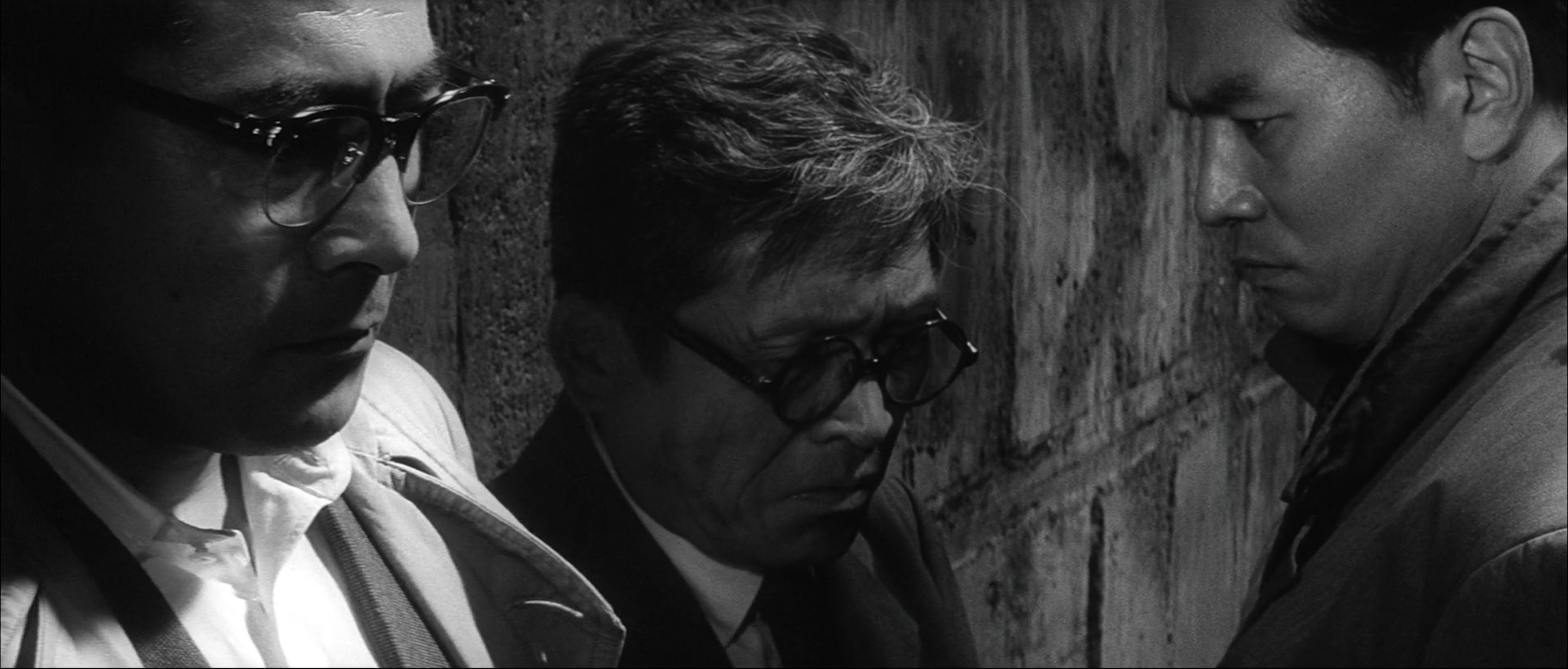
By this point, keen-eyed viewers will have picked up on a visual device that reliably teases out the complex character dynamics in Kurosawa’s blocking, and subtly underscores Nishi’s position as a covertly powerful player in this game. In many of The Bad Sleep Well’s most crucial scenes, Kurosawa prominently features three individuals in triangulated compositions, with each point being defined by its relative position and movement around the others. When Shirai becomes Nishi’s newest target in his scheme for instance, Kurosawa’s camera holds on a long take of his panicked discovery of stolen money planted in his briefcase, and follows him edgily through the office as his supervisor Muriyama grows more suspicious of his behaviour. Of course though, this scene would not be complete without Mifune’s confident, unobtrusive presence in the background, sitting lower in the shot as he quietly observes the disturbance. He does not say a single word, and yet this painstakingly geometric approach to composing the frame ensures that he is always at the front of our minds, crediting him as the man responsible for Shirai’s guilt-ridden, psychological breakdown.
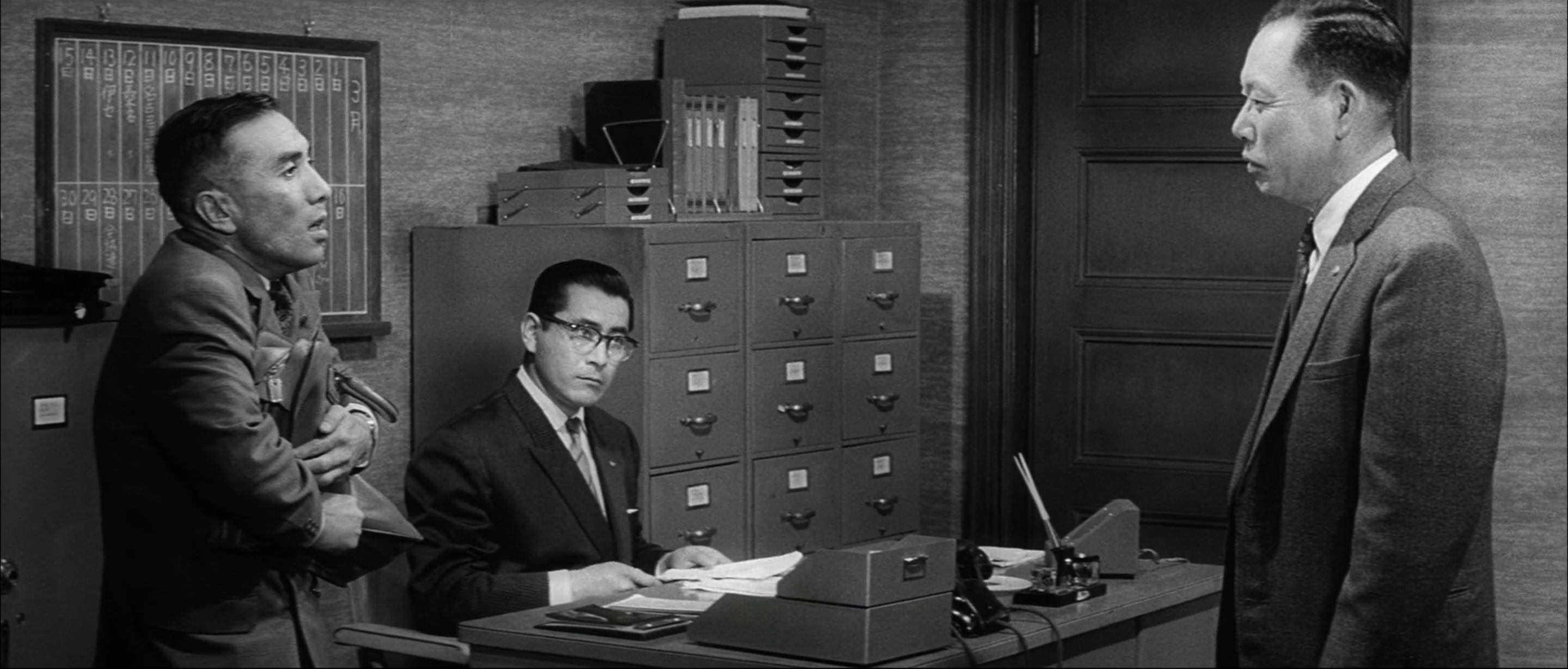
Still, the cunning manipulations and exorbitant privilege of Japan’s wealthy elite are not to be underestimated either. As Nishi hides out with his small crew in the dark, dank ruins of a bombed out factory, Iwabuchi operates from a well-resourced office with countless disposable minions working beneath him, ready to get their hands dirty. Like Nishi, he too proves that he is willing to manipulate and even drug his daughter Yoshiko to save himself, drawing a dead heat between them in terms of sheer determination.
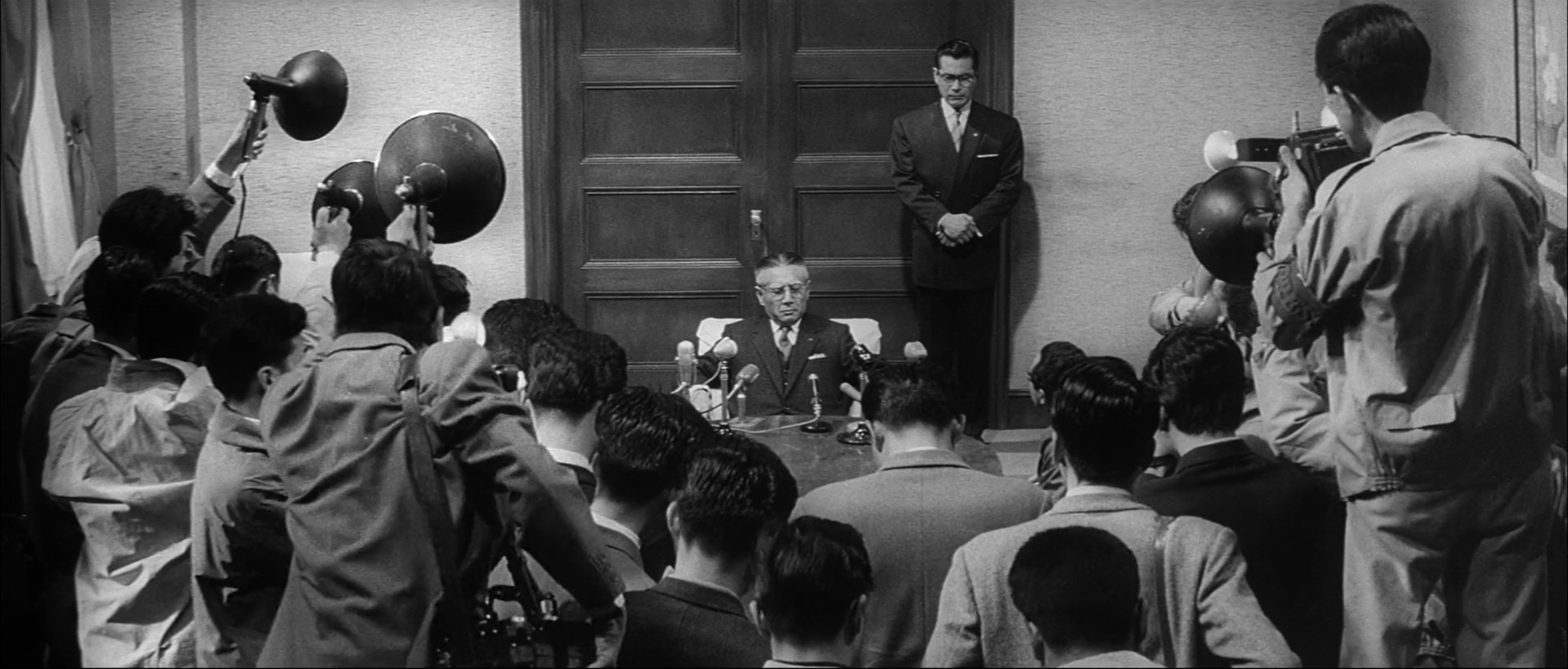
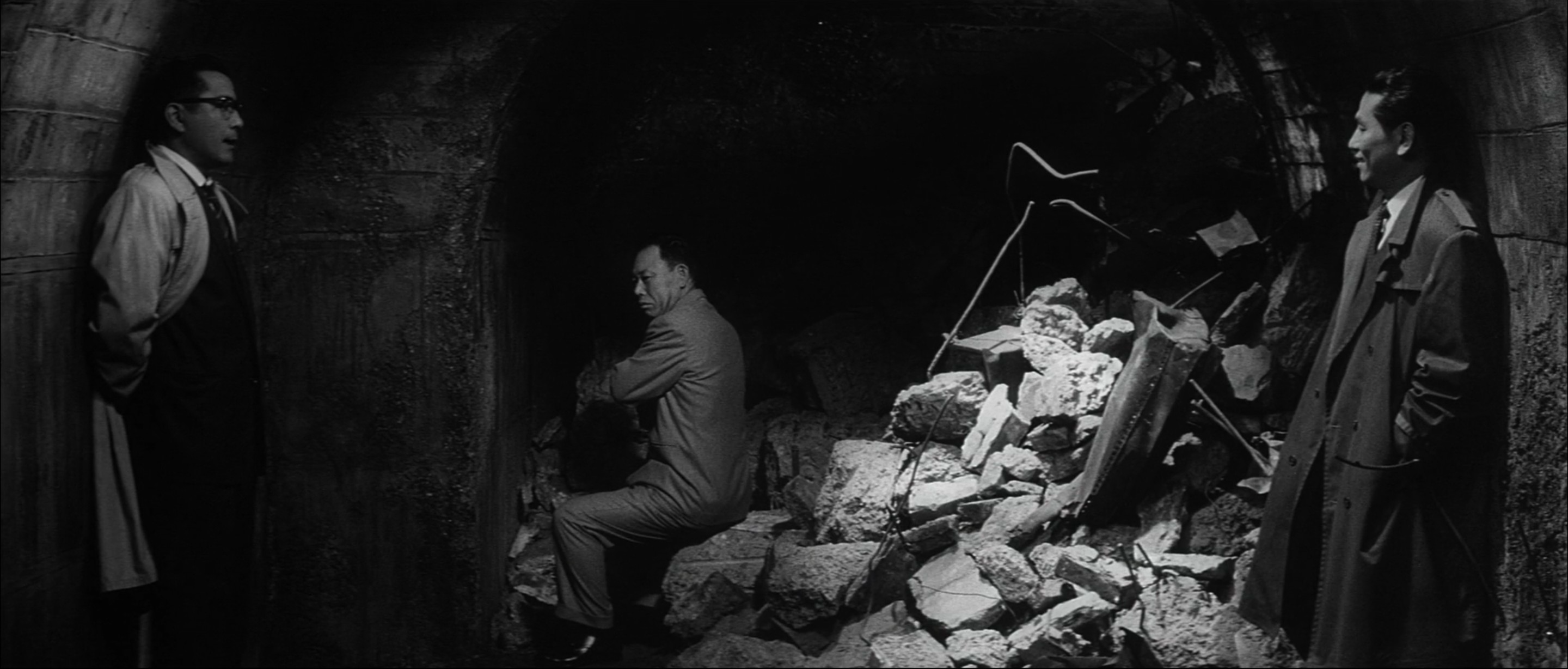
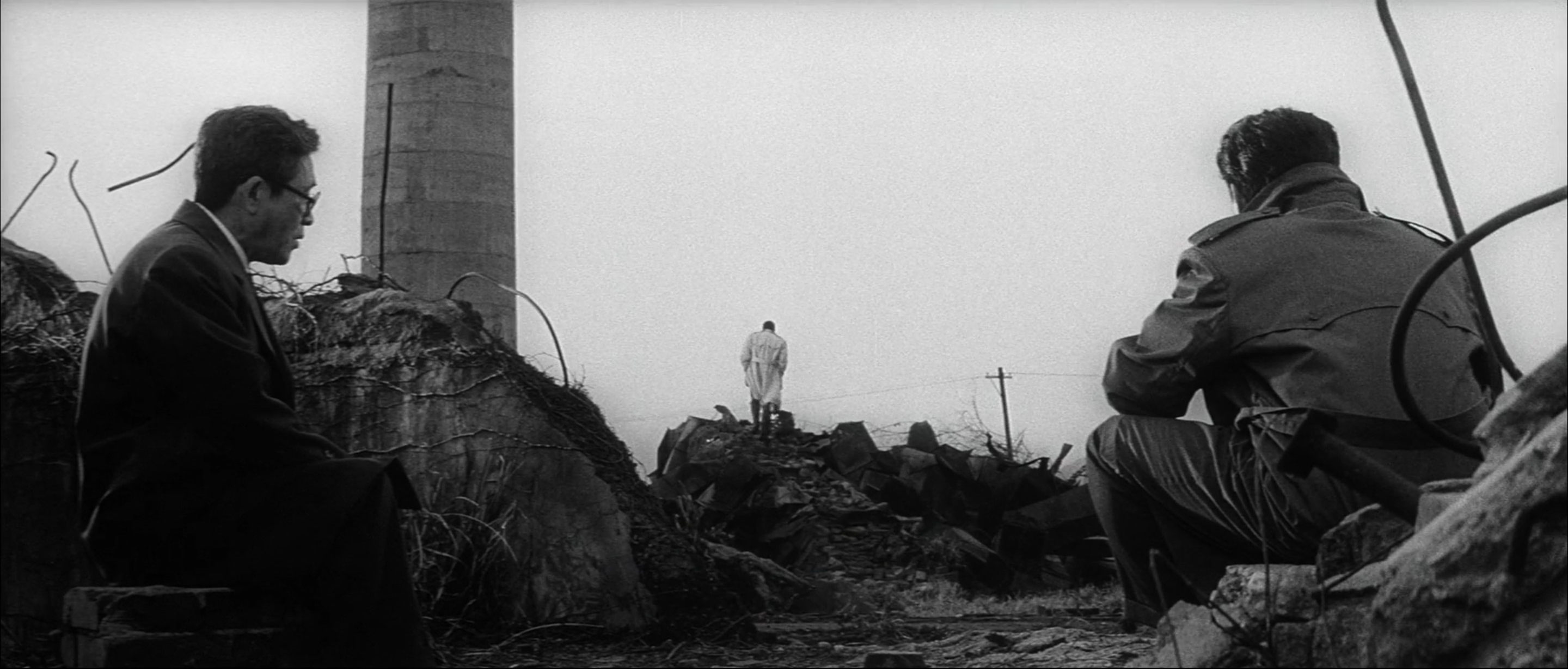
Even once all parties have finally caught up to each other and the finish line has come into view in the final act of The Bad Sleep Well, the competition between Nishi and Iwabuchi remains neck-and-neck. Within the Public Development Corporations’ bank books is the undeniable proof of Furuya’s assassination – all it comes down to is whether Nishi or Iwabuchi will win the race to their respective targets, infusing the climax with an uneasy suspense that Kurosawa finally resolves with a brutal, cynical gut punch. We are not even given the closure of witnessing the train collision which flattens Nishi’s car, set up by Iwabucha’s lackeys as a drink driving accident. Instead, Kurosawa simply leaves us to observe the lifeless wreckage of its aftermath, with the only survivors who know the truth being those too powerless to do anything about it.
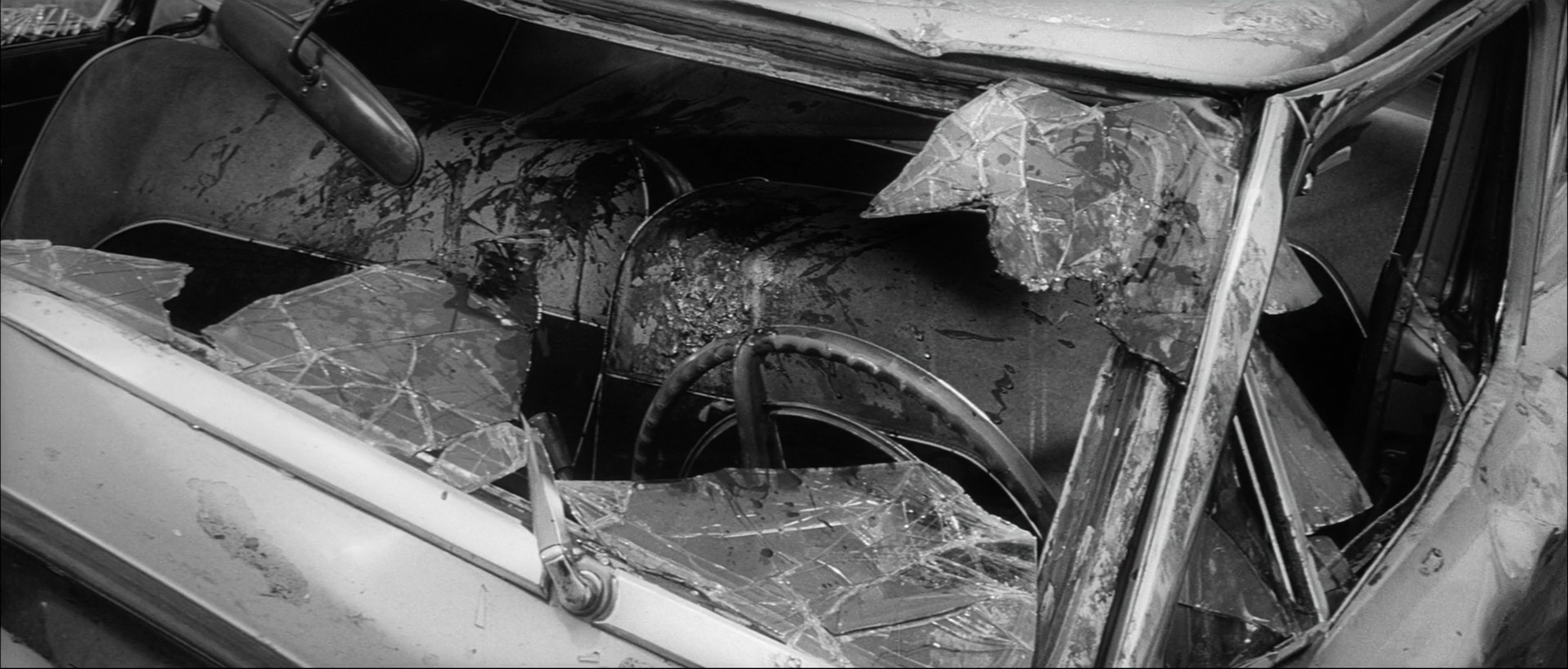
That Nishi should suffer the same fate as his father at the hands of the same men makes for a poetically devastating end to this saga, though within Kurosawa’s cutthroat world of corporate collusion, the ruling class’s total subjugation of the underdog is merely the way society works. At Iwabuchi’s press conference, the reporters who opened the film return to bookend it as well, reflecting upon Nishi’s life with a wary acceptance of the Vice President’s cover story in much the same way they once spoke of Furuya’s tragic suicide. Perhaps they are conscious of the corruption that runs deep in Japan’s bureaucracy to some extent, and yet its bloodied foundations remain shrouded in myth right to the end, resting upon the obedience, sacrifices, and bloodshed of disposable civilians.
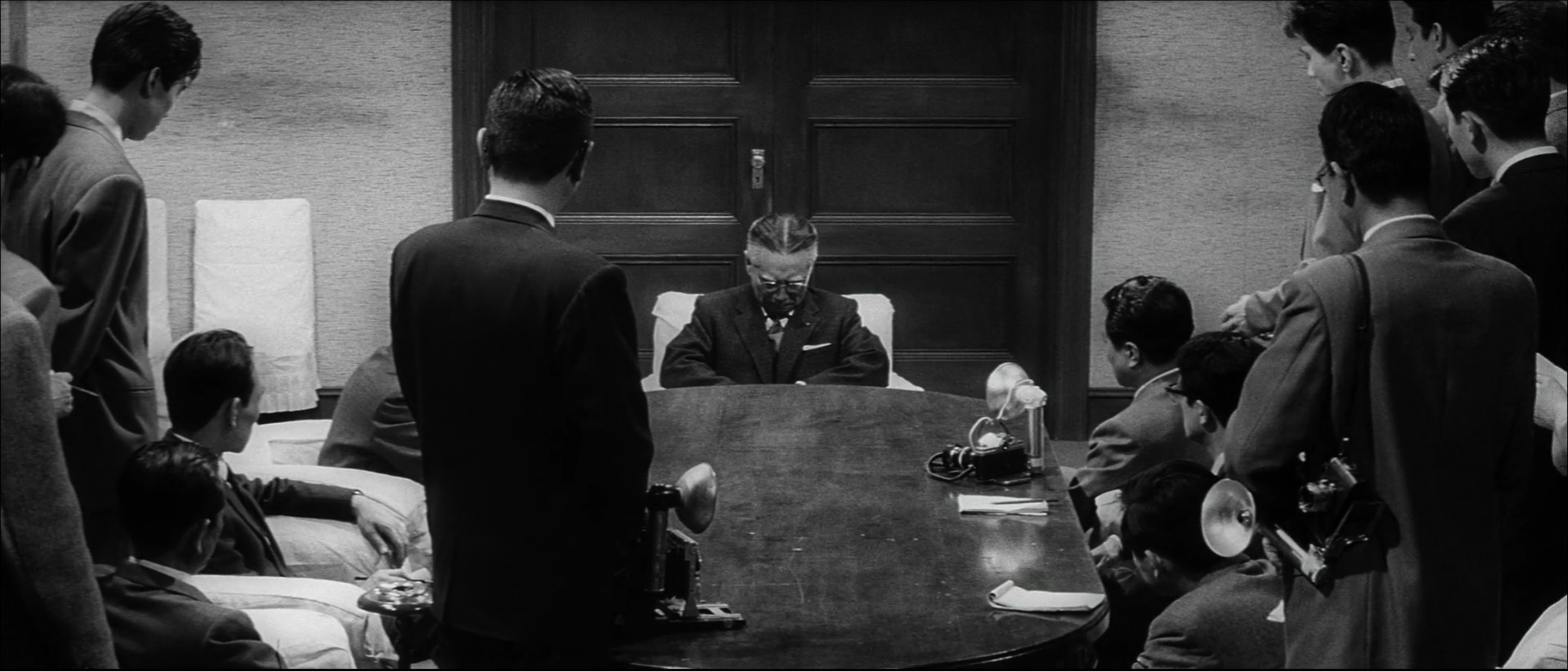
The Bad Sleep Well is currently streaming on The Criterion Channel, and the DVD and Blu-ray are available to purchase on Amazon.


Pingback: The 50 Best Screenwriters of All Time – Scene by Green
Pingback: The 100 Best Shot Films of All Time – Scene by Green
Pingback: The 100 Best Film Scores of All Time – Scene by Green
Pingback: The 50 Best Directors of All Time – Scene by Green